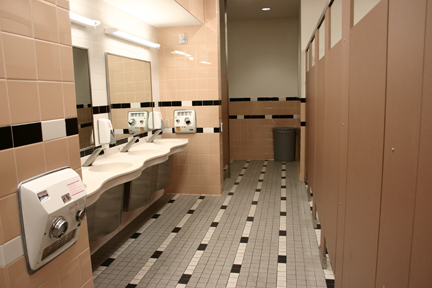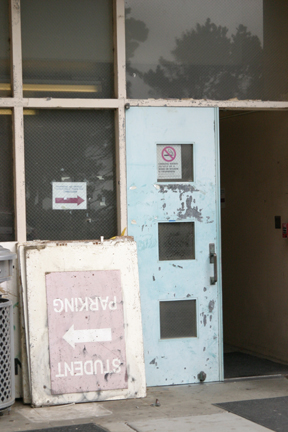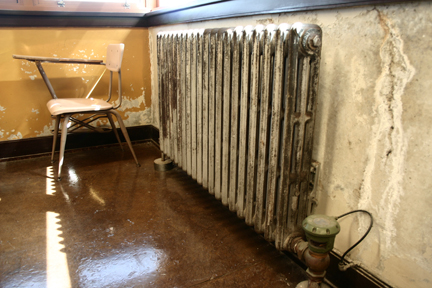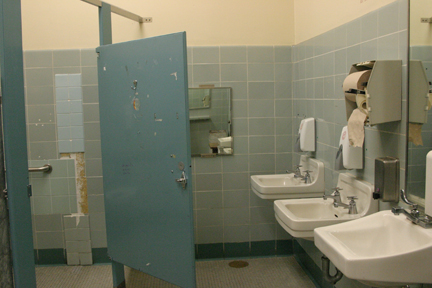Facilities in need of repair?
By Roxanne Bequio
Staff Writer
The contrast between recently constructed and older buildings on Ocean campus is prompting many of City College’s students to question when the older buildings will get a turn at renovation.
“City College is following the Master Plan and it doesn’t ignore the existing buildings. The plan first addresses the anticipated growth of the system and where the greatest needs are,” said James Blomquist, associate vice chancellor of facilities planning/management.
Some of these projects, including the improvement and expansion of the recently opened Mission campus, as well as the planning and construction of the new Chinatown/North Beach campus, were funded by the 2001 and 2005 Proposition A bond measures.
Although the City College board of trustees have not officially decided when the next phase of remodeling will occur, students can anticipate the early stages of more Ocean campus renovations with the completion of the next phase of construction which includes the new Joint Use Facility, scheduled to open in summer 2010, and the arrival of the next bond, to be issued in the next few years.
Classes held in older buildings like Cloud Hall, the Creative Arts Building and the 600-series bungalows would be moved into the Joint Use Facility, presenting City College with an opportunity to “remodel spaces and create better conditions within [older] buildings,” Blomquist said.
“The oldest buildings are those that need the most work, just because of their age,” Blomquist said. “Due to the Americans with Disabilities Act improvement project, many, if not all of the buildings on campus, will recieve remodeling in some of the bathrooms and a few classrooms to accommodate accessibility needs,” said Blomquist of the work financed by the 2005 Proposition A Bond funds.
Nursing major Selma Gardner said, “The bathrooms are always in poor condition. You know, you’ve got three sinks here, and maybe one paper towel holder working, or one stall. Especially in the science building the bathrooms are pretty funky.”
Within Blomquist’s department, concerns are shared over the condition of all the bathroom facilities. Water saving fixtures, similar to those in the new buildings, will be installed to conserve energy and natural resources when the college has enough money, said Blomquist.
At this time, restrooms on City College campuses will not be restored unless they conflict with the ADA and need remodeling to “adequately provide good service for disabled students,” said Blomquist. Remodeling required by the ADA will start this October and is expected to be completed by December 2009.
Non-compliant restrooms have not yet been identified, but will be upon evaluation. “If a room is completely non-compliant, a total renovation might be required,” said Blomquist.
An issue was raised toward the recently opened Community Health and Wellness Center regarding faucets and showers, which were not in working order. Blomquist said some valves were plugged up with debris and cleaned out by a plumber shortly after.
In any new building, there is a “breaking in period” when all the working parts get tested through daily use. Due to the contractor’s warranty minor problems, like clogged water pipes, are found and corrected at no cost to the college, said Blomquist.
“We get complaints from time to time on the comfort of a classroom, whether it’s too cold, warm, or noisy, and we try to address those as they come along,” said Blomquist.
When asked about older buildings on Ocean campus, 18-year-old City College student Angela Li said “Even though they’re old, they’re still in pretty good condition. It’s not like they’re falling apart.”
In addition to the appearance of older buildings’ interiors, earthquake preparedness is considered an important issue as well.
“All of the buildings on campus have been constructed within structural codes appropriate to the time they were built. Many have been inspected and determined to still be structurally adequate for seismic activity,” Blomquist said about the state of campus buildings.
“The current code requires that whenever any significant remodeling is done to a building, if there are seismic adjustments that need to be made to bring it up to current code, that has to be done as part of that work,” said Blomquist.
In regards to covering seismic work financially, “It depends on when that need [to retrofit a building] was discovered, but if we assume it was something that was decided upon currently, it would be funded by the 2001 and 2005 Proposition A Bond,” said Blomquist.







Comments are closed.